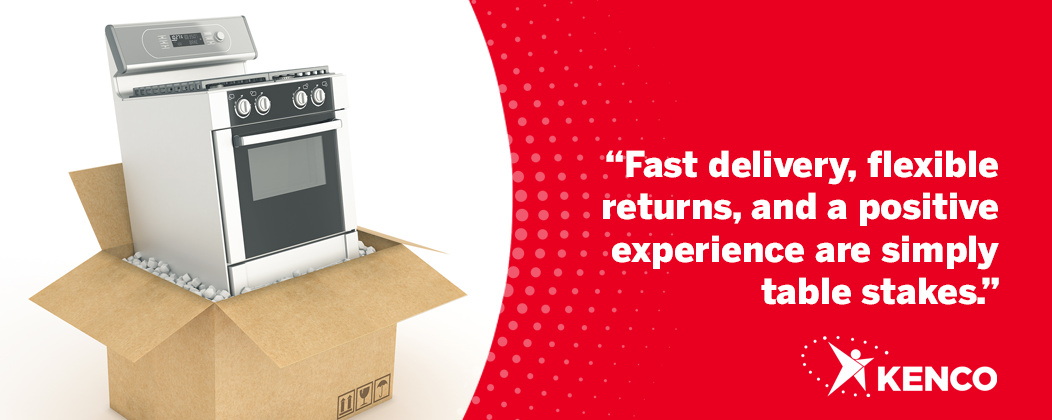Big and bulky inventory is weighing down today’s supply chain. Booming eCommerce sales, a hot U.S. housing market, and increased home renovations as a result of the pandemic have led to a spike in furniture and appliance demand. For customers, fast delivery, flexible returns, and a positive experience are simply table stakes.
For shippers, big and bulky items pose a number of challenges. They’re space-intensive at the warehouse, require complex final mile delivery systems (which are expensive to set up and difficult to hire for amid labor shortages), and are arduous to process from a returns perspective.
The final mile delivery market is expected to grow to $59.81 billion by 2025 in North America, so it is critical that shippers invest in strong strategic planning to optimize big and bulky deliveries and create a customer experience that propels their brands forward. Below are five strategies to make that happen.
- Involve the Customer Where You Can
Although many aspects of the delivery process are within the shipper’s and carrier’s control, there will always be unforeseen circumstances once you arrive at the customer’s door. Some shippers have started asking customers to measure their spaces, including doorways the products will pass through, in their pre-delivery notes. This helps give delivery drivers a heads-up if there will be an issue and prevents failed installation attempts. Even if customers don’t measure their spaces beforehand, this communication level sets expectations and recognizes the possibility that an item won’t fit.
- Make a Choice: Final Mile or White Glove Delivery?
Final mile vs. white glove is a matter of speed vs. brand experience. Final mile delivery offers faster, more cost-effective in-and-out deliveries, whereas white glove offers an elevated customer experience and more focus on your brand’s specific needs. An example of white glove service is a delivery driver not only delivering an appliance to a home, but also unboxing and installing it and confirming it works correctly. It also typically involves removing the appliance being replaced, if applicable. To decide between final mile and white glove, you should weigh if you need to prioritize cost effectiveness or a customer experience that will move your brand forward. Whether or not white glove delivery makes sense for your business depends on your brand image and specific customer experience goals.
- Ensure You Have a Robust System
When it comes to final mile delivery, a robust backend system is absolutely critical. Customers today expect the same, if not more, tracking visibility for couches or refrigerators as they do for parcel. You’ll need advanced technology to optimize delivery routes, narrow down the tightest possible delivery window, communicate frequent updates with customers (i.e. “Your dishwasher will arrive in 30 minutes”), and notify them of delays. If you don’t invest in an advanced system, you will experience serious challenges in terms of tracking and customer experience.
- Have a Reverse Logistics Strategy in Place Before You Start
With a 20-40% return rate among big and bulky items, you need a strong reverse logistics strategy in place. Returned items are typically unboxed, meaning they’re single-stacked and sprawled throughout the warehouse floor, eating up limited space quickly. Without a plan on how to move that inventory, your warehouse will soon be consumed by returned items. It’s important to have a processing plan to receive and grade returns in terms of their condition, and then either re-box undamaged inventory for resale, process it for second-channel sales, or scrap it. This all takes a lot of space and labor—two scarcities in today’s supply chain—so an action plan is critical.
- Lean on Trusted Partners
To help mitigate the many challenges that come with transporting big and bulky inventory, shippers can lean on trusted partners for expertise and guidance. Kenco has extensive experience working with retailers of big and bulky inventory to master warehousing, final mile or white glove delivery, and reverse logistics. To speak to an industry expert or learn more about how Kenco can help, visit our Transportation Services page.


